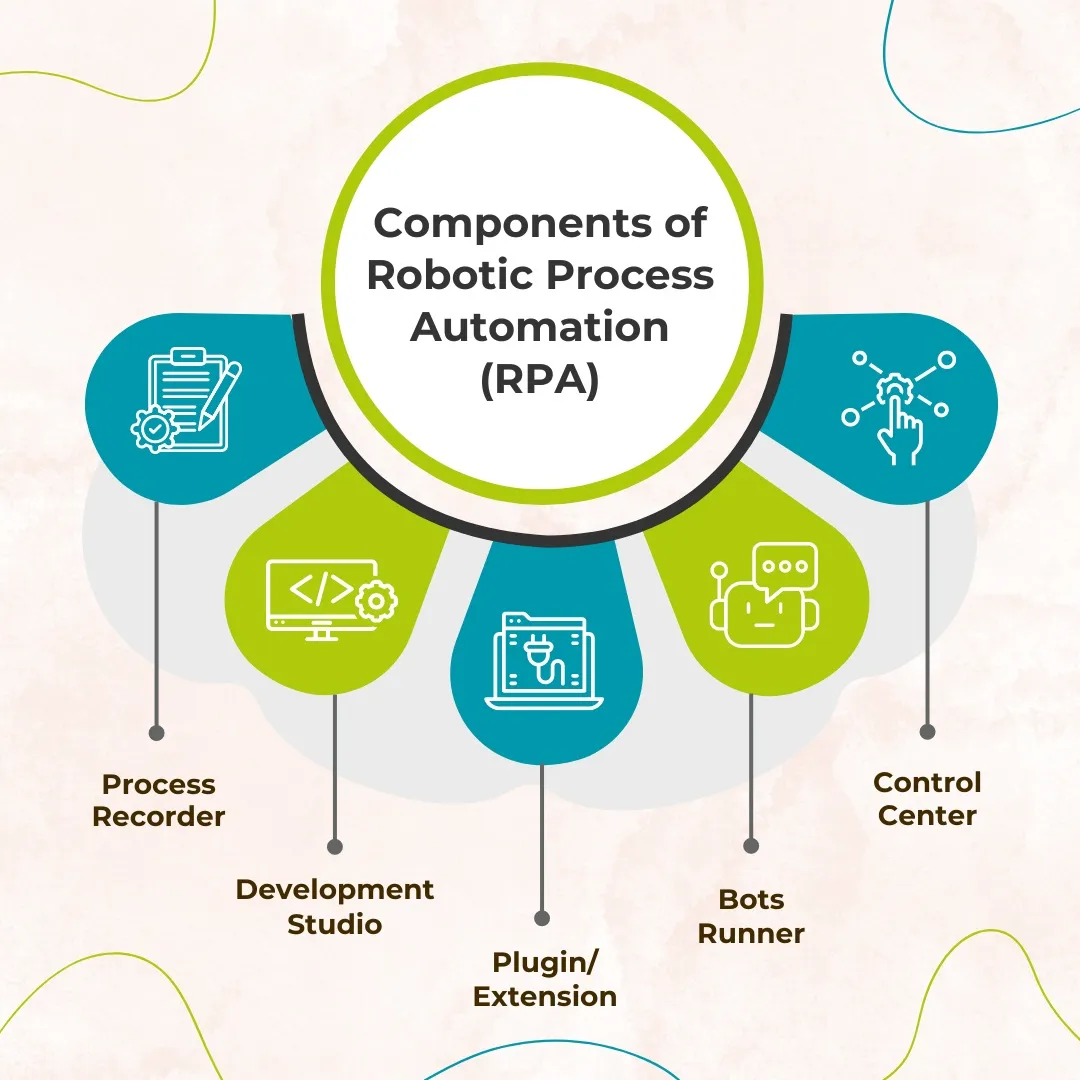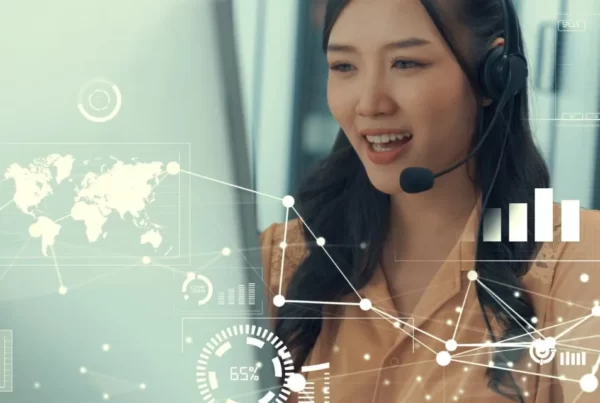
Businesses face the growing challenge of meeting heightened customer expectations. With 86% of customers discontinuing their association with a brand due to a single negative experience and a staggering 69% of American consumers following suit, it’s evident that merely “hiring the right people” no longer suffices. To exceed baseline customer expectations, embracing cutting-edge technology becomes imperative.
This blog delves into innovative solutions like Conversational AI, AI-powered Chatbots, and RPA with which businesses can elevate their customer service game, ensuring improved response times, 24/7 availability, cost savings, heightened customer satisfaction, and the cultivation of robust customer relationships.
Let’s discuss the future of customer service models and discover how these advancements are reshaping the industry to meet the demands of an increasingly discerning customer base.
What is Conversational AI?
Conversational AI encompasses technologies like chatbots or virtual agents created to facilitate user engagement in natural conversations. It utilizes large datasets, machine learning, and natural language processing to imitate human interactions, understanding and responding to speech and text inputs in various languages. The combination of NLP and machine learning forms a feedback loop to enhance the AI algorithms continually.
What are AI-powered Chatbots?
AI-powered chatbots are programs designed to mimic human-like conversations through either text or speech interactions. Unlike regular chatbots, they utilize AI algorithms to understand diverse user queries and provide appropriate responses. The primary goal of these chatbots is to offer information and assistance or engage in natural conversation with users.
What is RPA?
Robotic Process Automation (RPA) is a technological approach that enables the creation, deployment, and oversight of software robots capable of mimicking human actions when interacting with digital systems and software. In customer service, RPA is applied to automate various processes, such as call center operations, deploying chatbots, implementing voice assistants, and more. This aids in optimizing customer interactions, delivering prompt responses, and enabling human agents to concentrate on essential tasks.
The Evolution of Customer Service
In the early days, customer interactions were business-centric, with the customer journey concluding at the sale. Support was limited to business hours, and the customer experience was often considered complete after the initial transaction. Over time, customer service evolved from a transaction-focused to a customer experience-centric approach.
Impact of Conversational AI
The customer journey extends beyond the initial transaction, emphasizing the importance of exceptional post-sale customer service. Digital strategies have been implemented, providing customers multiple channels for reaching businesses, self-service options, and 24/7 availability.

Benefits of Conversational AI
Hands-Off Support and Analysis
- Resolves customer queries without human agent involvement.
- Saves money and provides valuable insights into customer behavior through automated tracking of communication and metrics.
More Authentic Than a Chatbot
- Learns and adapts to complicated queries and conversational experiences over time.
- Provides a conversational experience, avoiding the need for predetermined queries and robotic responses, enhancing customer satisfaction.
Cost Efficiency
- Reduces expenses associated with hiring and maintaining a large customer service department.
- Operates as a virtual agent or assistant, minimizing infrastructure, salary, and training costs while maintaining good customer care.
24/7 Availability
- Responds immediately at any time of the day, utilizing technologies such as chatbots, voice assistants, and virtual assistants.
- Ensures consistency and a positive customer experience, allowing human agents to focus on more difficult queries.
Increased Sales and Customer Engagement
- Provides continuous customer support, reducing wait times and improving customer experience.
- It leads to higher sales, customer loyalty, and satisfaction, with happy customers likely to refer to new business.
Scalability
- Sets up infrastructure quickly and cost-effectively compared to recruiting and training new employees.
- Optimizes support operations, reduces wait times, improves agent productivity, and generates substantial cost savings in large organizations.
Advantages of AI-powered Chatbots in customer service
The adoption of Conversational AI, particularly AI-powered chatbots, has played an important role in this transformation. These chatbots simulate human-like conversations through text or speech, offering information and assistance and engaging in natural conversations. This technology enhances customer interactions by providing immediate responses, streamlining processes, and allowing human agents to focus on critical tasks.
Benefits of AI-powered Chatbots
24/7 Customer Service:
- Provides continuous support, responding to customer queries anytime, including nights, weekends, and holidays.
- Ensures immediate responses without the need for a 24/7 human support team.
Focus on Complex Requests:
- It frees human agents to handle the most complex requests requiring a human touch.
- Allows agents to concentrate on areas where AI may not be as effective, enhancing overall support quality.
Multilingual Support:
- Instantly expands customer base by offering multilingual support.
- Provides inclusivity and eliminates the need for costly manual translation tools.
Efficient Information Collection:
- Engages customers in natural dialogue to collect relevant details upfront.
- It improves customer conversation routing, enhances understanding of customer needs, and saves time in troubleshooting.
Guided Self-Service:
- Acts as a personal assistant, directing customers to specific support documents based on provided information.
- Enhances the customer’s self-service experience by guiding them to solutions without the involvement of human support agents.
Role of RPA in enhancing customer interactions
Robotic Process Automation (RPA) has also been integrated into customer service strategies. RPA facilitates developing and deploying software robots replicating human activities and automating various customer service processes. It includes call center operations, chatbot deployment, and voice assistant implementation. By automating routine tasks, RPA frees human agents to concentrate on more complex and crucial customer interactions, improving overall customer experience.

Personalized Customer Interactions
- Enables personalized communication strategies by swiftly analyzing vast customer data.
- Tailors marketing messages and customizes product recommendations for individualized and relevant interactions.
Seamless Multi Channel Communication
- Integrates and synchronizes communication channels effortlessly in the era of omnichannel interactions.
- Bots handle queries, process orders, and update information across platforms in real time, ensuring consistency.
Enhanced Speed and Efficiency
- Reduces processing times for tasks like order processing, issue resolution, and information retrieval.
- Contributes to a prompt and efficient customer service experience, valuing customers’ time.
24/7 Availability
- Operates round-the-clock, providing continuous customer support across different time zones.
- Ensures timely assistance, fostering a positive brand perception and increasing overall satisfaction.
Error Reduction and Data Accuracy
- Eliminates human errors in manual processes by consistently following predefined rules.
- Ensures data accuracy, reducing the risk of customer dissatisfaction and enhancing reliability.
Empowering Human Resources
- Frees up human resources from routine tasks to focus on customer interaction’s complex, creative, and value-driven aspects.
- Enables employees in strategic decision-making and empathetic customer interactions, enriching the customer experience.
What’s the difference between Conversational AI and AI-powered Chatbots
Conversational AI and AI-powered chatbots share the common goal of facilitating human-like conversations, but there are nuanced differences in their functionalities and capabilities. Here are the characteristics that set conversational AI apart from AI-powered chatbots.
As companies increasingly prioritize enhancing customer engagement, understanding the unique features of these technologies becomes crucial for informed decision-making.
| Feature | Conversational AI | AI-powered Chatbots |
|---|---|---|
| Interaction Complexity | Facilitates more nuanced and complex conversations, adapting to various user intents and emotions | Primarily follows predefined flows or rules, providing specific responses based on predefined scenarios |
| Technology Foundation | Utilizes machine learning, natural language processing (NLP), and data collection for personalized interactions | Relies on predefined algorithms or decision trees for responding to user queries |
| Understanding Context | Capable of understanding the context of the conversation and responding | Limited context awareness, responds based on individual user inputs |
| Human-like Interaction | Mimics human-like interactions, providing a more engaging and tailored experience | Emulates human-like responses but may lack the depth of understanding in comparison to conversational AI |
| Application Scope | Extends beyond chatbots to include virtual assistants (e.g., Siri, Alexa) and broader AI-driven communication platforms | Primarily designed for automated text-based interactions and customer service scenarios |
| Decision-making Autonomy | Exhibits higher autonomy in decision-making processes leveraging ML and NLP | Limited autonomy, often reliant on making processes, predefined rules, and scenarios |
Conversational AI Trends and Predictions
The trends and predictions in AI-powered contact center automation align with the broader Conversational AI concept, indicating a future where these technologies become more sophisticated, personalized, and integral to delivering exceptional customer experiences.
The AI-powered contact center automation trends highlight the increasing integration of Conversational AI technologies such as chatbots, virtual assistants, and speech analytics. This integration is expected to become more sophisticated, providing seamless and natural customer interactions across various channels.
Advancements in Natural Language Processing (NLP)
The focus on AI-driven technologies like chatbots and virtual assistants implies a continued emphasis on advancing Natural Language Processing capabilities. Conversational AI is predicted to evolve towards a more nuanced understanding of user queries, enabling more context-aware and human-like interactions.
Enhanced Personalization in Customer Interactions
The competitive advantages of contact center automation solutions, including personalized customer interactions, indicate a growing trend toward tailoring AI responses based on individual preferences and behaviors. Conversational AI is expected to become more adept at leveraging customer data for hyper-personalization.
Multichannel Support and Unified Experiences
The mention of multichannel support in the benefits of contact center automation suggests a trend toward providing a unified customer experience across various communication channels. Conversational AI will likely ensure consistency and continuity in customer interactions, regardless of the platform.
AI-Driven Proactive Assistance
The prediction of AI-powered predictive analytics and proactive customer engagement indicates a shift towards Conversational AI systems taking a more proactive role in assisting customers. This includes anticipating needs, offering suggestions, and initiating interactions without explicit user prompts.
Continuous Learning and Improvement of Chatbots
The detailed functionalities of chatbots, including continuous learning and improvement, highlight a trend towards more intelligent and adaptive Conversational AI. Systems are expected to evolve through ongoing learning from user interactions, ensuring they stay relevant and effective.
Emphasis on Sentiment Analysis
The mention of sentiment analysis as a key trend implies a growing importance of emotional intelligence in Conversational AI. Systems will likely focus on understanding and responding to user emotions, contributing to more empathetic and customer-centric interactions.
AI-Powered Quality Monitoring
The trend of using AI for quality monitoring in contact centers suggests a future where conversational AI systems are focused on customer interactions and assessing and improving human agents’ performance. It points towards a holistic approach to enhancing overall customer service quality.
RPA, IPA, and IVR Integration: A Synergy For Exception Customer Service
Integrating Robotic Process Automation (RPA) and Intelligent Process Automation (IPA) in customer service significantly benefits businesses and customers.
RPA automates repetitive tasks, enhancing operational efficiency by processing transactions and managing queries quickly and accurately.
It reduces the workload on human agents, minimizing errors and ensuring swift and reliable customer interactions.
However, automation technologies like Interactive Voice Response (IVR) systems have garnered mixed consumer reactions. While IVR promises 24/7 availability and efficient routing of customers, it often leads to frustration due to complex navigation and impersonal interactions.
Despite the potential benefits, a significant portion of consumers find IVRs to create a poor experience, with a high abandonment rate of calls.
Well-designed IVR systems can significantly improve the customer experience by providing quick access to information, routing calls appropriately, and even resolving simple issues without human intervention.
The challenge lies in overcoming consumer dissatisfaction with IVRs, as they are typically customer support’s first point of contact.
The real promise emerges from the synergy between RPA, IPA, and IVR. RPA and IPA enhance personalization in customer interactions by analyzing data to anticipate needs and tailor responses based on individual profiles.
IPA revolutionizes IVR systems, making them more adaptive and responsive, capable of understanding and processing a broader range of customer queries with minimal human intervention.
This integrated approach speeds up resolution times and allows customer service teams to focus on rather complicated queries requiring a human touch, ultimately improving overall engagement and satisfaction.
On The Final Note
Integrating Conversational AI, AI-powered Chatbots, and Robotic Process Automation (RPA) is reshaping customer service. These technologies offer businesses a competitive edge by providing personalized interactions, streamlined processes, and cost savings.
As customer service evolves towards a more experience-centric model, these tools prove indispensable, offering 24/7 support, authentic interactions, and automation of routine tasks.
Future trends indicate increasing sophistication, personalization, and seamless multichannel experiences. The synergy of RPA, Intelligent Process Automation (IPA), and Interactive Voice Response (IVR) promises a powerful solution for exceptional customer service, ensuring swift and reliable interactions.
Adopting these advancements not only future-proofs customer service strategies but also establishes a responsive, efficient, and customer-centric approach in the evolving landscape of customer interactions.
The future of customer service lies in the transformative potential of Conversational AI, AI-powered Chatbots, and RPA – a unified force driving the industry toward a futuristic and customer-centric model.



